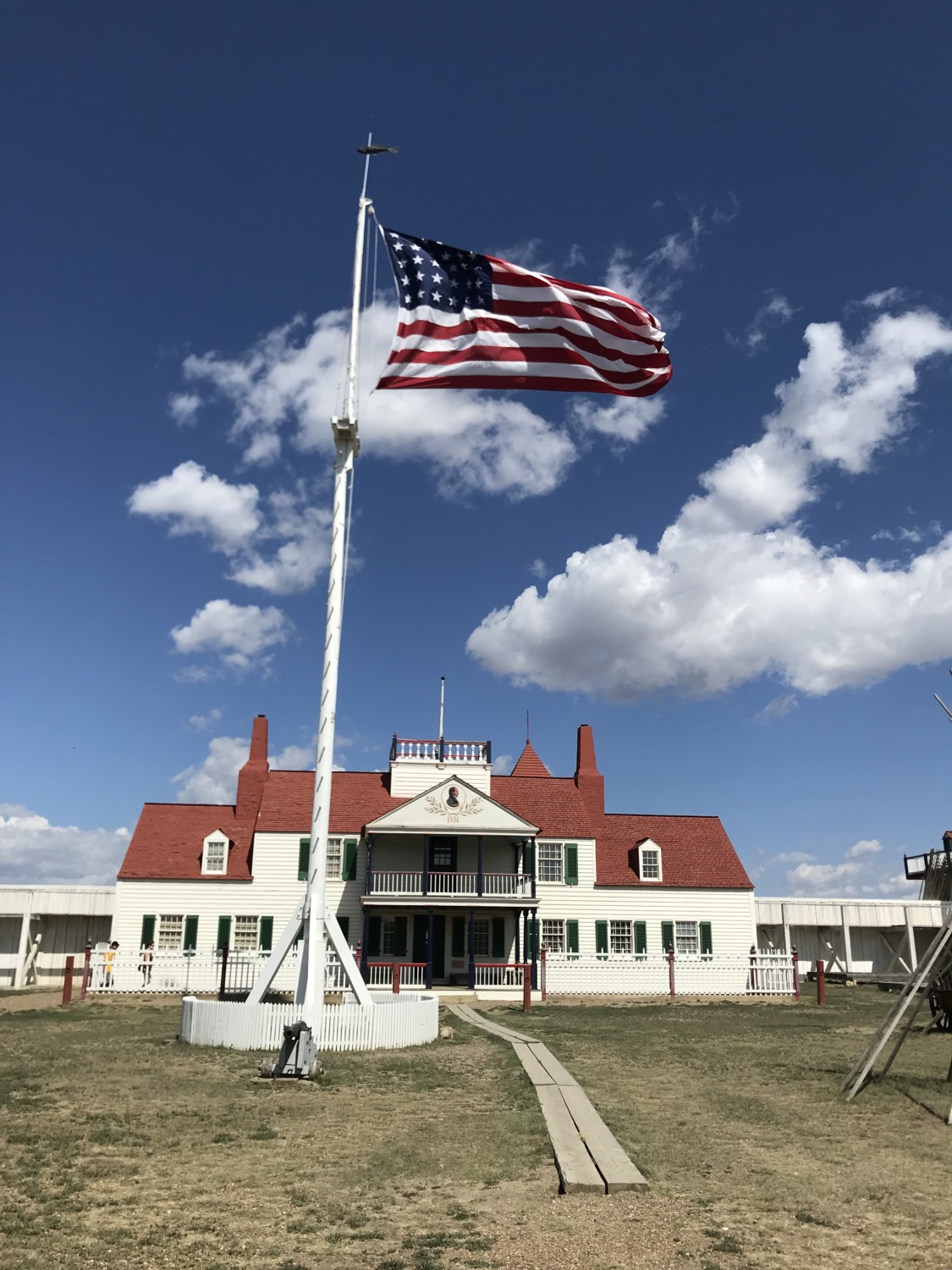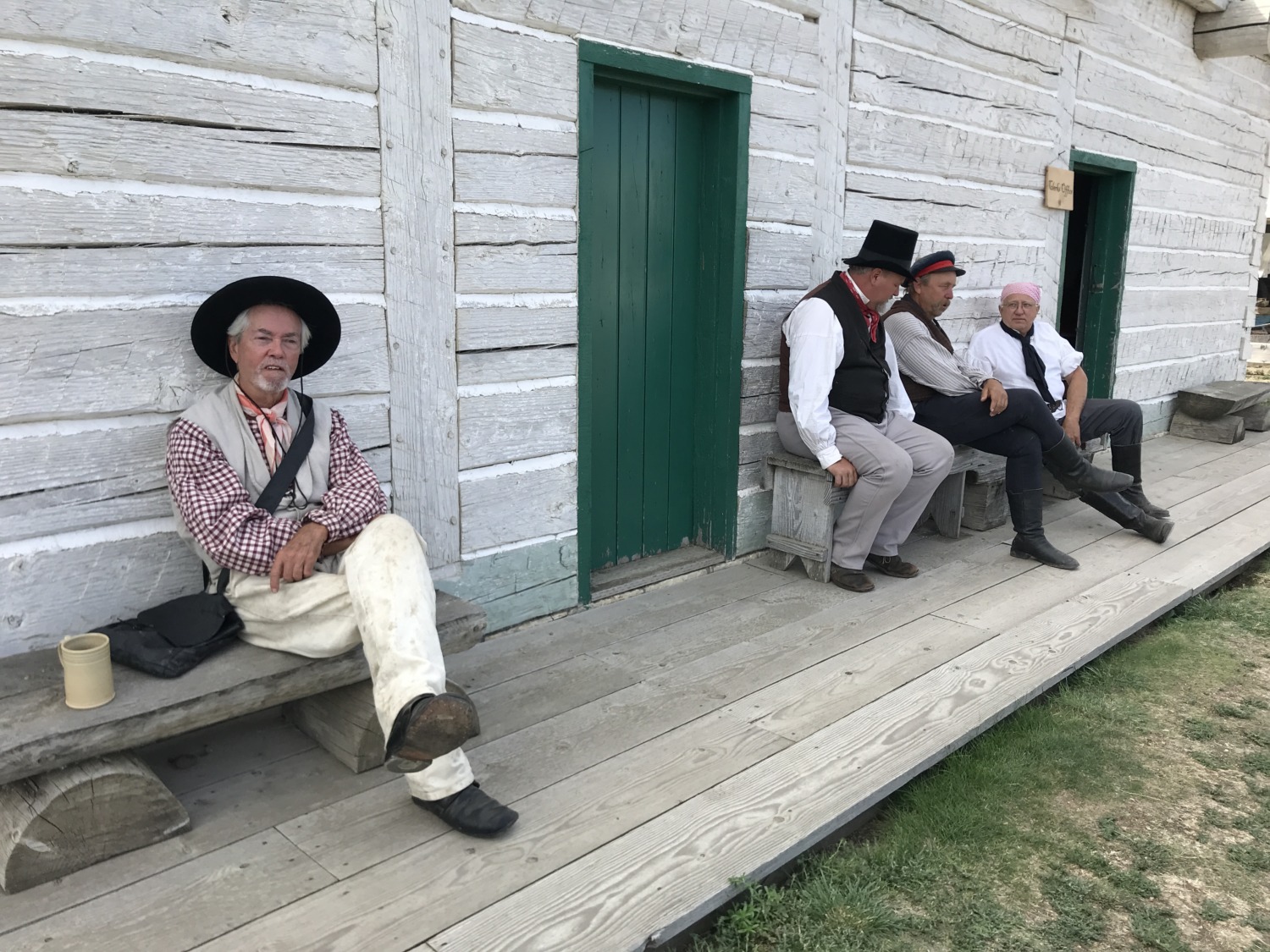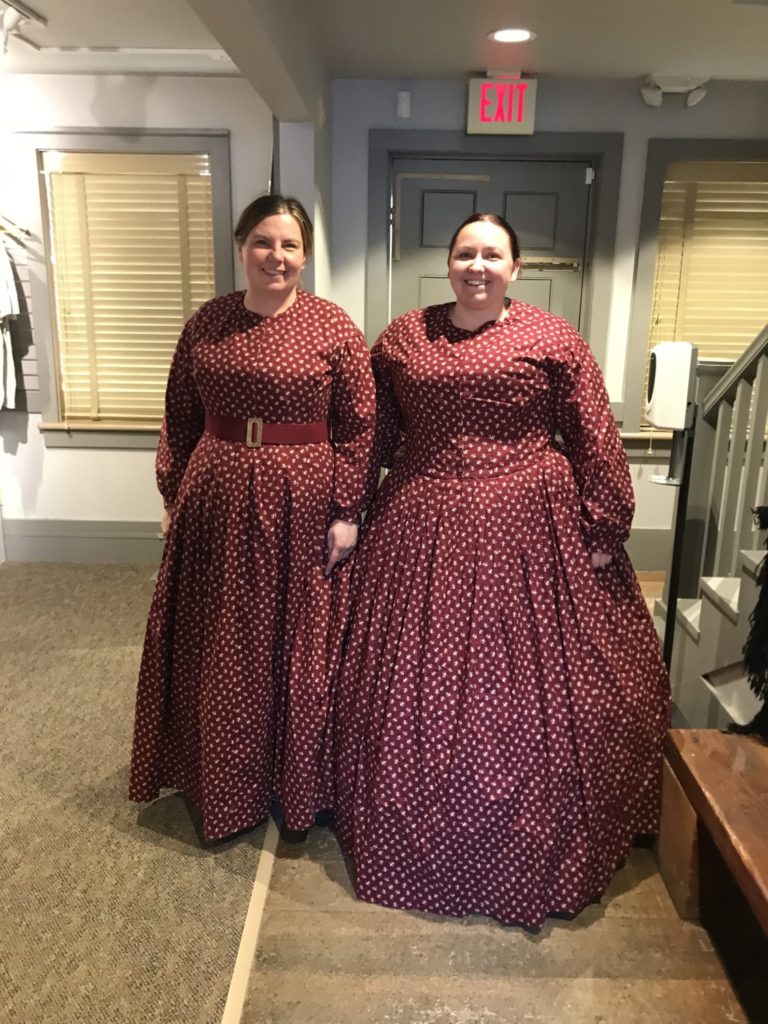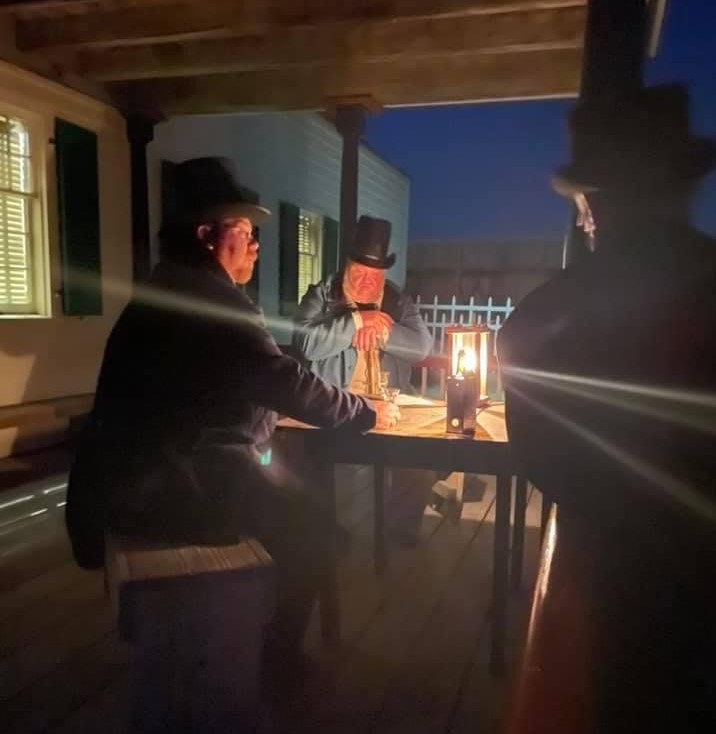Over Labor Day weekend, Fort Union Trading Post hosted a Living History Weekend. Rendezvous in June is the biggest event of the year but Living History Weekend is a close second. It seems an appropriate bookend to our time at Fort Union Trading Post National Historic Site. We hurried to get out here in time for the Rendezvous and now close out the summer with the weekend. We will still be working until September 30, but visitation is halved after Labor Day.

Living History Weekend was supposed to have 10 to 15 people coming to give living history demonstrations all days Saturday and Sunday. Unfortunately a lot of demonstrators canceled at the last minute. Everyone had a different reason, so we just made the best of the few demonstrators we had.

Matthias came out to demonstrate blacksmithing. On Saturday Tom worked with him, but on Sunday another volunteer helped him. Volunteer Matthias lives in Dickinson, 150 miles away, so he usually stays in the seasonal housing when he comes up. He is 17 or 18 years old and loves to hammer on things.

Tom demonstrated coopering on Sunday. Tom has a really good coopering talk and he always draws a crowd. We may only have ten visitors in the park, but they will all be crowded around him whatever he is doing.

On Saturday we had two American Mountain Men volunteers from Idaho. American Mountain Men is an organization that takes living history very seriously. During their activities, they try to live as a mountain man would have in the 1700’s or 1800’s. Our Ranger Leif is an American Mountain Man and he invites others in his group to events at Fort Union. Their web page says “The American Mountain Men’s primary characteristic is, first and foremost, to be a Brotherhood of Men. In this fraternal concept is embedded the desire of all its members to teach, share, and learn the arts and skills of the original American mountain men.” That’s a little too manly for me.

The two AMM guys who came out on Living History weekend were wonderful. One demonstrated gunsmithing – repairing and replacing parts of trade guns. The other was proficient in Indian sign language. He taught signs to the kids and adults that came and handed out a sheet of Indian sign language. Both of them looked very authentic and interacted wonderfully with the groups of people.

Dave Finders, who I wrote about previously, set up in a small tent as a tailor. Some of the other Fort Union volunteers were supposed to repair the bannisters on the bastions, but only one showed up. He couldn’t do much on his own but he stayed and looked authentic over the weekend.

The Halverson families came and camped in the tipis outside the fort. Leif and Sigfreid are brothers and their kids enjoy running around together in period clothing. They are wonderful about playing period games, singing period songs, and generally adding an air of life and fun to the gatherings. On Sunday they pulled a cart around the fort, delivering cookies to the volunteers and staff.
Amanda Watson and her husband Ben came back. Because spinning is not period appropriate for the fort, they camped and demonstrated outside. I didn’t get to spend much time with them, but I gave Amanda the bison roving I bought at the Great Lakes Fiber Show. I didn’t have a single person ask me all summer if you could spin bison fiber, so I decided to pass it on. Amanda also gave me a skein of beautiful yarn that she spun.
I worked in the Visitors Center all weekend. We had 400 visitors over the course of the three-day weekend. We expected Monday to be less busy because we didn’t have any living history demonstrations, but it was almost as busy as Saturday and Sunday.

One thing that didn’t go quite as planned was the big garrison flag. We only put it up on Saturdays because it takes so many people to get it down and folded. Saturday is the only day we have enough staff. But, because of the wind on Saturday, the flag got wound around the flagpole and then wound around one of the guidewires. We tried to get it down on Saturday but it was stuck. Ranger Jade had to bring in a lift (not historically appropriate) but even that didn’t get it unstuck.
On Sunday, with high winds, the flag became a sail and it looked like it was going to rip the flagpole out of the ground. One of the volunteers puts up billboards for a living and he thought he could get it unstuck. Everyone watched, holding their breath, as he got the flag unhooked so we could lower it. It was good to get it down before the even higher winds on Monday.
The highlight of the weekend was the Last Bell Tours. Starting at 8 on Saturday night, a guide took a group of 25 visitors around to seven vignettes. The tours ran every 15 minutes, with the last tour beginning at 9:15. The sun set shortly after 8, and each tour got progressively darker.
The tours told the story of John Jacob Astor, who was the founder of the American Fur Company, which built Fort Union. I was in the first vignette as Mrs. Astor and I had to tell the story of John Jacob Astor’s early life. Tom was in the third vignette as a laborer carrying gunpowder up the riverbank to the fort. For the visitors it was supposed to feel like stepping back in time into a scene from the past. Tom and I really enjoyed participating in it but we were tired by the end of the evening.
After the last Last Bell Tour, the Fort Frederica Association served pie and ice cream to all the living history demonstrators and those who participated in the tours. About 10:30 that night, Tom and I walked home across the field. It was a beautiful night and the sky was so clear that we could see the Milky Way from one horizon to another.
Altogether, there were close to 500 visitors over the events of Living History Weekend. About 30 volunteers and our small group of staff worked tirelessly to put on a good show for our guests. I hope our visitors enjoyed it as much as Tom and I did.









